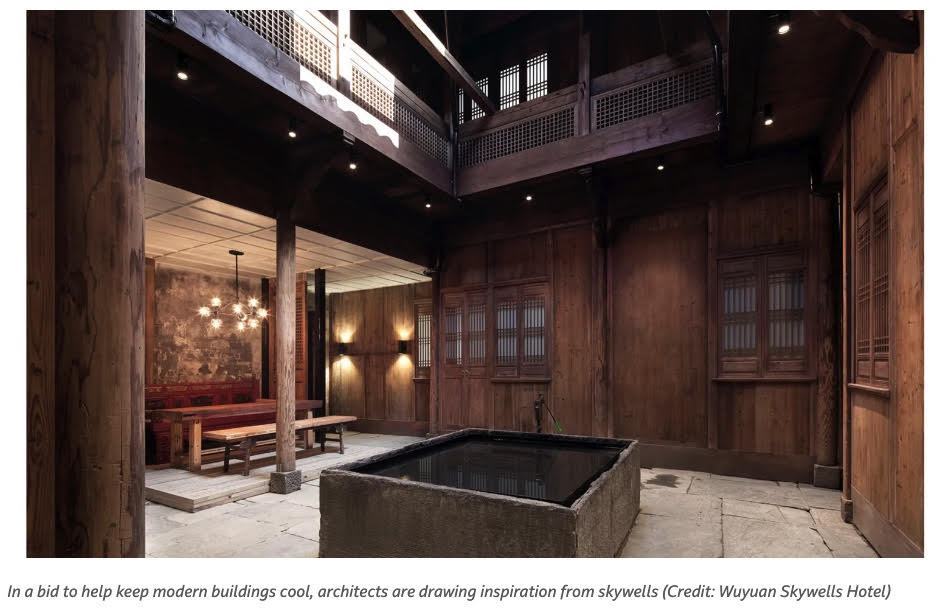Ancient Chinese Skywells Keep Homes Cooler With Water & Wind
Ancient Chinese Skywells Keep Homes Cooler With Water & Wind
Ancient skywells used to play an essential role in keeping homes cool. Temperatures within certain skywells located in southern China can be more than 20 degrees cooler. As China continues to experience rapid urbanization, skywell dwellings in residential options declined as air conditioning became the standard.
The resurgence of interest in traditional Chinese architecture featuring skywells has prompted the restoration of historic buildings that feature skywells. The emphasis on low-carbon advancements in the building sector has resulted in a growing trend of incorporating elements from skywells and other traditional Chinese architectural designs.

Incoming breezes descend along the walls of the well, replacing warmer indoor air on lower levels and creating airflows. The warmer air rises and exits through the opening, establishing a natural ventilation system within the building. Additional purposes of a skywell are to allow in light, improve ventilation and harvest rainwater.
These practices highlight the intricate design and functionality of skywells in Huizhou, where the combination of their heat-buffering properties and the presence of water bodies contribute to a natural cooling effect, creating a more comfortable living environment for residents.
Evidence from skywell dwellings in Xidi and Zhifeng villages show that evaporative cooling had a substantial influence on the reduced temperature. The temperature fluctuation was likely to have been the main reason that the mean DBTs inside these skywells were 2.6 – 4.3 degrees Celsius lower than the mean external DBT.
In the commercial, institutional, and industrial sector cooling and ventilation represents a huge cost. Are there ways to incorporate historic innovations like this into modern building design?
Read the full article on how ancient skywells are keeping homes cool at bbc.com.



